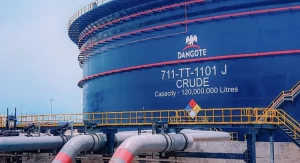3,000 Barrels of Crude Oil lost to Oils pills
3,000 barrels of crude oil have been lost to oil spills from the November 15 offshore Egina floating production storage and offloading vessel of total energies of the Niger Delta Coast.
Director General of National Oil Spill Detection and Response Agency, Idris Musa gave an update on the spill on Sunday in an interview.
The platform is located 130 kilometers off Port Harcourt Coast.
He said the cleanup of the major oil spill continues.
The major oil platform has the capacity to produce 200,000 barrels of crude oil daily and has storage for 2.3 million barrels of crude.
Read Also:
Crude Oil Prices Rise As Saudi Leads OPEC To Cut Production Level
Director-General of the National Oil Spills Detection and Response Agency (NOSDRA), Mr Idris Musa, told the News Agency of Nigeria (NAN) on Sunday that the clean-up of the spill was still ongoing.
He added that NOSDRA and TotalEnergies did not spare any effort in tackling the pollution to minimize its impact on the environment, a development that kept the spilled crude from reaching the coastline.
The spill has not hit the coastline because of the effectiveness of the spill contingency plan we deployed,’ he said.
Musa explained that NOSDRA deployed high-level personnel and activated the National Oil Spills Contingency Plan to contain the spill.
The spill was not a minor one; it was the response strategy put in place that resulted in limited impact and we have been tracing and tracking the oil slick and supervising response efforts.
NOSDRA deployed personnel led by a director to the site and we have remained on the spill site as well as granting the requisite approvals to hasten the response, he said.
Musa explained that TotalEnergies took steps that made the response swift and effective, adding that other oil companies assisted in the response.
He stressed that spill clean-up required a collaborative response from oil industry stakeholders, which, in this case, deployed aircraft, and at least five vessels in the application of 15,000 litres of liquids to clean the waters.





